The Streamr
One streaming app to rule them all
A unified platform that simplifies streaming service management, helping users discover content across multiple platforms while managing their subscriptions efficiently.
Overview
In today's streaming landscape, users juggle multiple subscriptions across Netflix, Hulu, Disney+, Amazon Prime, and countless other platforms. This fragmentation creates frustration as users spend valuable time searching across apps, lose track of their subscriptions, and struggle with complex cancellation processes.
The Streamr addresses these pain points by providing a unified platform where users can manage all their streaming content and subscriptions in one place, making entertainment discovery effortless and subscription management transparent.
Role
Sole UX Designer
Focus
Streaming Management Platform
Methods
User Research, Iterative Testing, Prototyping
Timeline
Summer 2022
Understanding the Problem
Through user research, I identified three core problems that streaming service users face daily.
Content Discovery Chaos
Managing multiple streaming apps can be a pain for users. People spend so much time scrolling through multiple apps to find what they are looking for.
Subscription Overload
With so many apps, users can lose track of what they are subscribed to and end up paying a lot.
Cancellation Complexity
Canceling some subscriptions can be tedious. Users usually want an easier way to cancel them.
My Role in the Project
Sole UX Designer
I was responsible for the entire design process from concept to prototype.
Concept Development
Identified the problem and developed the initial concept
Research & Testing
Conducted user research and iterative usability testing
Design Development
Created wireframes, prototypes, and final designs
Proposed Solution
The Streamr Solution
The Streamr provides a single platform where users can manage and find all the content of all the streaming apps they own.
Usability testing confirmed the problem. Users were indeed frustrated with the number of apps and their management.
Solving the Problem
The Streamr solves the problem by providing users a single platform to manage and view their subscriptions.
I conducted usability testing at regular intervals of the project and took feedback. Users reacted positively to my designs.
Research & Design Process
A comprehensive approach to understanding user needs and iteratively designing solutions.
Affinity Mapping
I organized user research insights using affinity mapping to identify patterns and themes in user behavior and pain points. This helped me understand the core issues users face with multiple streaming services.
- • Grouped similar user feedback and observations
- • Identified recurring themes and pain points
- • Prioritized problems based on frequency and impact
- • Discovered opportunities for design solutions
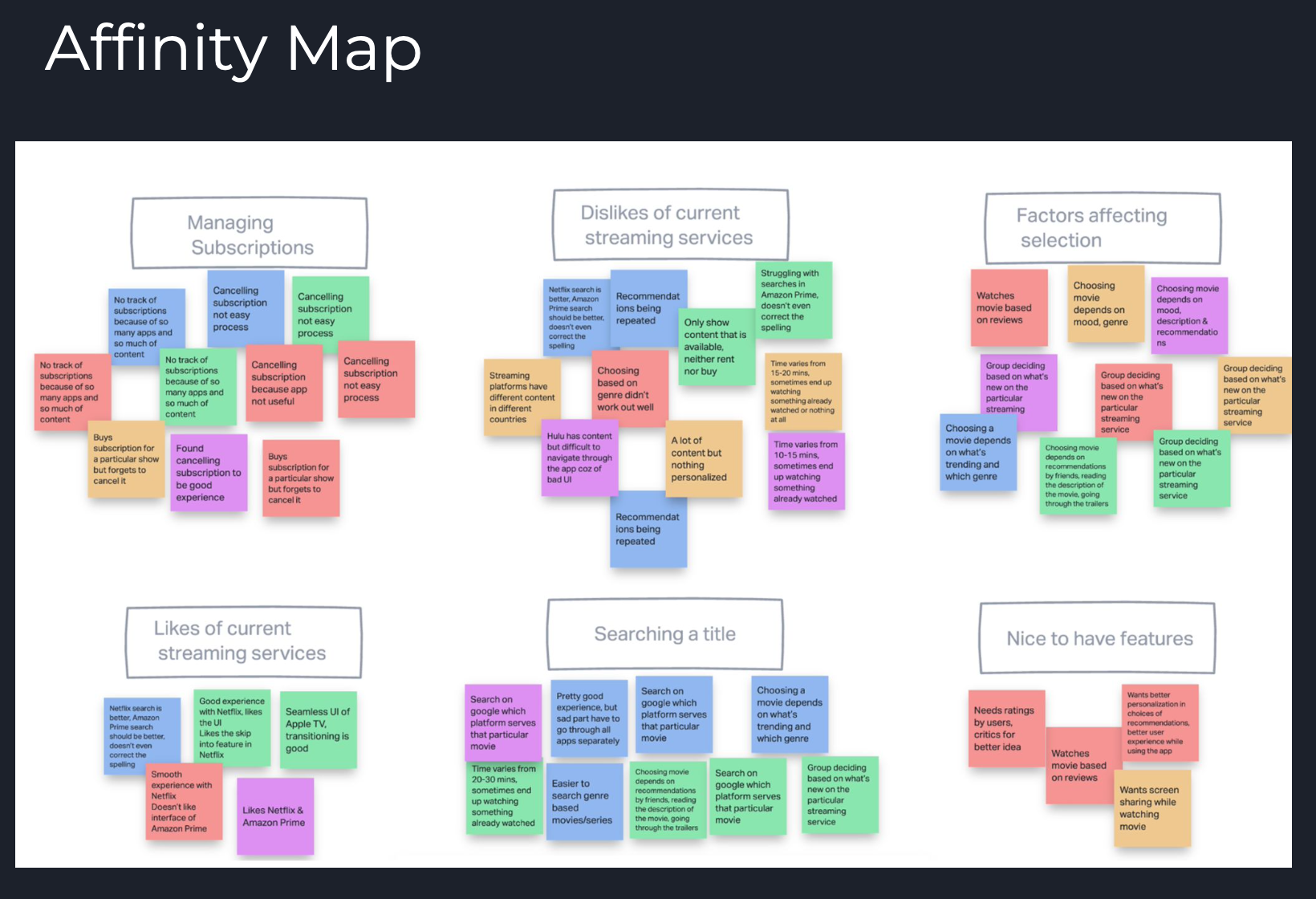
Affinity map organizing user feedback into key themes and pain points around streaming service usage (Click to expand)
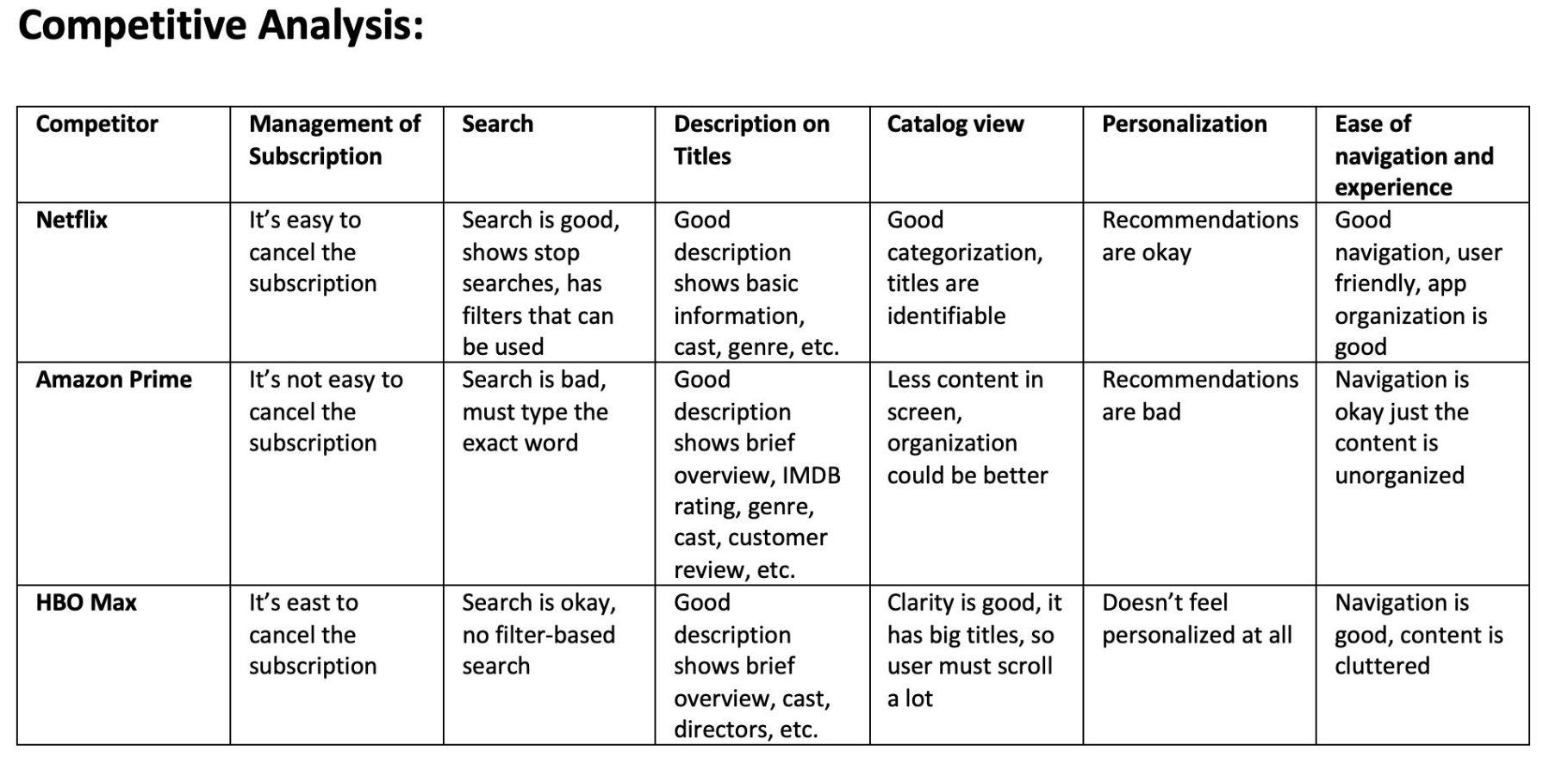
Competitive analysis comparing major streaming platforms across key user experience factors (Click to expand)
Competitive Analysis
I analyzed existing streaming platforms and aggregation services to understand the current market landscape and identify opportunities for differentiation.
Primary Persona
Streaming Enthusiast
Age 25-35, Tech-savvy
A busy professional who loves entertainment but is frustrated by the complexity of managing multiple streaming subscriptions. They want to discover new content easily without jumping between apps and need better control over their subscription spending.
Goals
- • Find content quickly across platforms
- • Manage subscription costs effectively
- • Discover new shows and movies easily
Pain Points
- • Too many apps to search through
- • Losing track of subscriptions
- • Difficult cancellation processes
Paper Prototypes
I started with paper prototypes to quickly explore different layout concepts and user flows. This low-fidelity approach allowed for rapid iteration and early user feedback.
- • Rapid concept exploration
- • Early user feedback collection
- • Cost-effective iteration
- • Focus on functionality over aesthetics

Hand-drawn paper prototypes exploring key user flows: search, content discovery, subscription management, and cancellation processes (Click to expand)
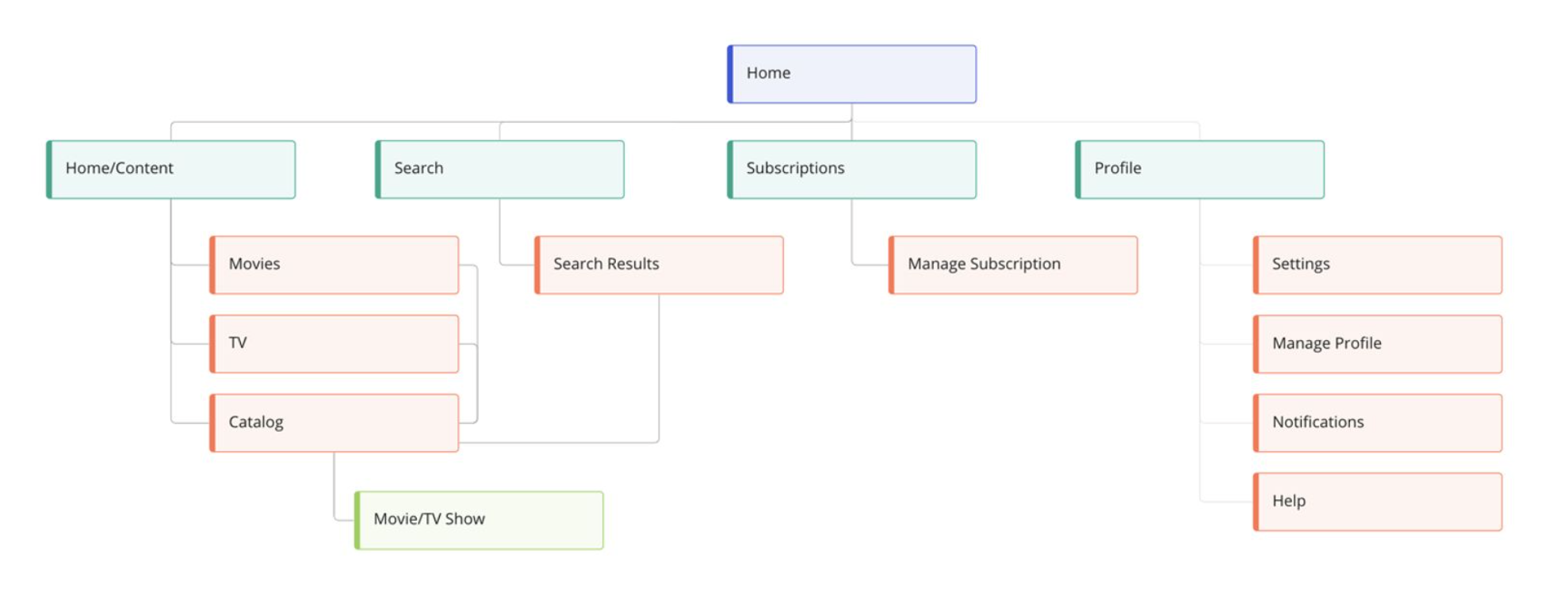
Site map showing the complete information architecture and navigation structure of The Streamr platform (Click to expand)
Site Map
I created a comprehensive site map to organize the platform's information architecture, ensuring logical navigation and easy access to key features.
Low Fidelity Wireframes
Based on the paper prototypes and site map, I developed low-fidelity wireframes to establish the basic layout and functionality of key screens.
- • Home screen with unified content feed
- • Search and filter functionality
- • Subscription management interface
- • Content detail and streaming options
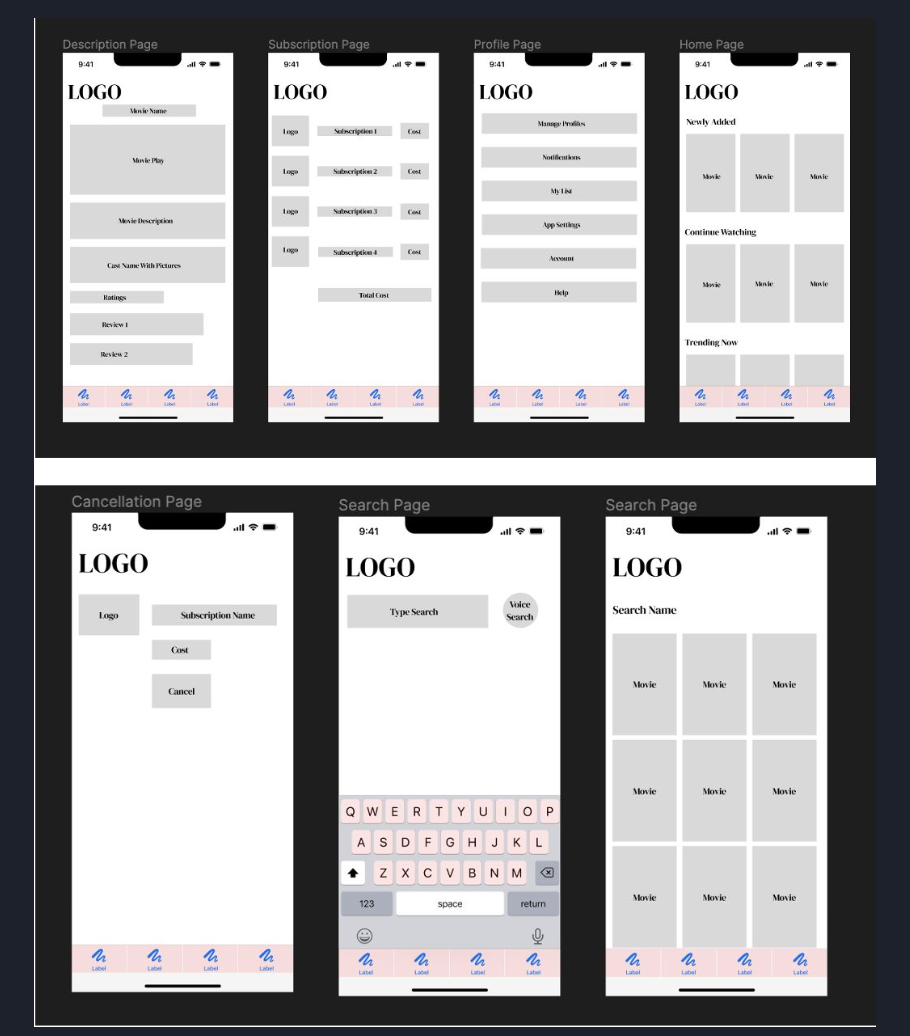
Low-fidelity wireframes showing key user flows: content discovery, subscription management, search functionality, and user profile management (Click to expand)
Challenges & Feature Prioritization
Through user research and testing, I discovered insights that led to design pivots and feature prioritization decisions.
Feature Prioritization Matrix
I used a prioritization matrix to categorize features based on their impact and whether they were expected or unexpected findings from user research.
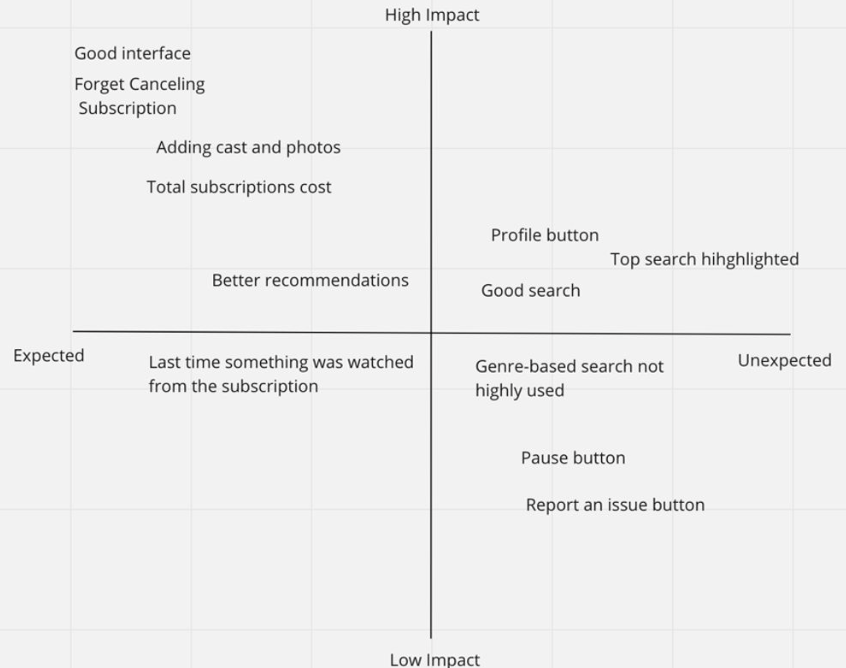
Prioritization matrix helping identify which features to focus on based on user research insights (Click to expand)
Design Concepts Not Pursued
Content Segregation
Initially, I considered segregating content by streaming platform to help users understand where their content was coming from.
Why it was dropped: Users didn't find it necessary and preferred a unified view without platform distinctions. This insight came from the "unexpected" quadrant of our research.
Genre-Based Search
I explored implementing a genre-based search system as the primary way for users to discover content.
Why it was dropped: User testing revealed that people preferred search and recommendation-based discovery over genre browsing. This was categorized as "low impact, unexpected" in our matrix.
Key Insights from Prioritization
High Impact, Expected Features
- • Good interface design was crucial
- • Easy subscription cancellation was a must-have
- • Total subscription cost visibility was essential
- • Better recommendations were highly valued
Surprising Discoveries
- • Profile button placement was more important than expected
- • Search highlighting significantly improved usability
- • Genre-based search was less useful than anticipated
- • Users valued simplicity over feature complexity
Key Learnings
Importance of Iterative Testing
I learned the importance of iterative testing. It made me improve my wireframes continually based on the feedback of my users.
Prototype Testing Value
I realized the importance of prototype testing for exploring new design concepts. It made us test new designs to make sure they were viable solutions before putting in the development effort.
Overall Impact
This project taught me the value of user-centered design and the importance of validating assumptions through testing. The iterative approach helped create a solution that truly addressed user needs rather than assumed requirements.
Wireframes & Prototype
The final high-fidelity wireframes showcase The Streamr's complete user interface, from authentication to content discovery and subscription management across all key user flows.

Core user flows: Sign-in authentication, content details with cast information, subscription cost management showing total monthly expenses ($43.96), and profile management interface (Click to expand)

Content discovery and management: Home page with personalized content sections, subscription cancellation flow, search functionality with keyboard interface, and search results with visual content grid (Click to expand)
Interactive Prototype
Experience the complete user journey through The Streamr's interface, from sign-in to content discovery and subscription management.